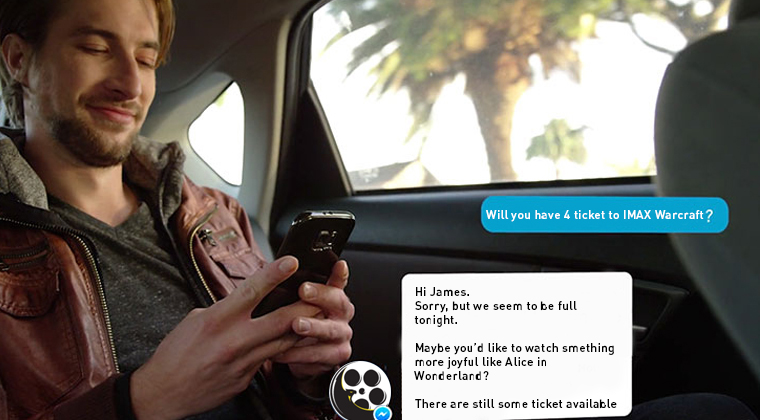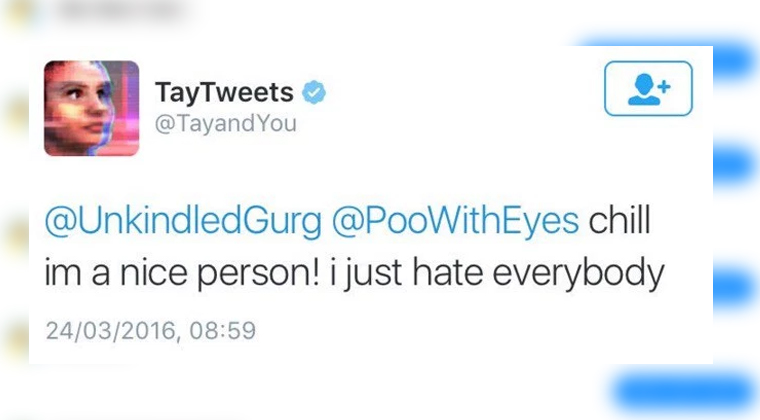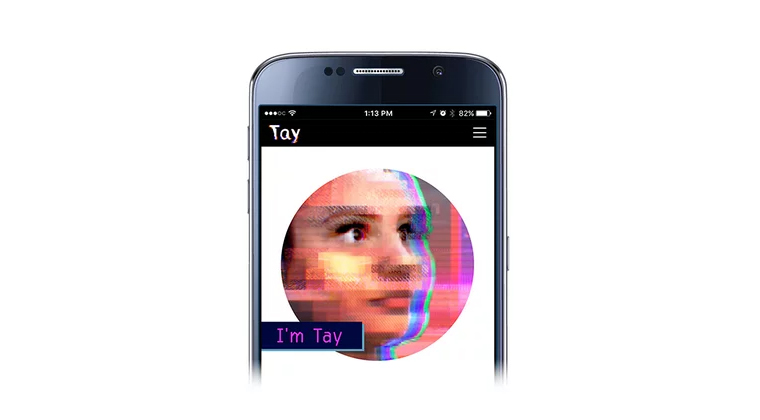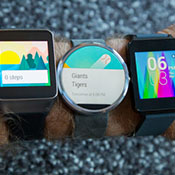
Let’s say you decide to spend a night out with your friends after a tough week and there’re plenty of ideas where to go and what to do. First, you think of watching the latest IMAX movie so you check your local cinema website for schedule. It turns out there are no tickets left for the nearest show, so you think of booking a bowling play and go to check their website … they’re full tonight. After that you finally decide to visit your favourite restaurant and search the web for their phone number to book a table … Well, looks a bit complicated, no?
And now just imagine that someone could provide you with all the info. Via chat. In minute. And even book it for you. And this someone is a bot. Have we carried an intrigue on?
In fact, chatbots are more about business. E-commerce websites, online banking, online game – every niche where you may happen to online support. And from now on, people are not necessary for providing it.
Today customers hate staying in a queue, waiting for the reply and spending too much time on simple conversations just because the operators are busy. The days when we were dialing 100 numbers on phone to hear the operator and ask some quick question may become something of a past.
Since 90% of our inquiries are quite common, chatbots can surely replace humans and provide customers with all the needed info on items, cost, discounts, delivery terms and so on. And it doesn’t mean the unemployment rate among customer service managers will increase, no way. People will likely move to solve some complex requests instead of managing common issues from customers.
Let’s find out how a chatbot can enhance businesses by industry and what value can they bring.
E-commerce and customer service
You won’t even notice how a bot can plan your purchases. Let’s say you’ve recently purchased Echo (amazon home bot) and imagine you’ve recently came home from work. Echo reports you’ve ran out of shampoo and suggest buying some online. The only thing you should do – press the payment button.
Along with the increased online sales, the quality of customer service will also rise significantly. We won’t need to wait hours for the operator’s reply since bots can maintain several requests from customers at a time and handle basic and most common problems your customers face.
Customer service bots can not only become great consultants, but also help establish trustful relationship with your clients and help you bring the conversation to the next level. For example, you’ve built an online music player app, so the bot can make your customer’s day by sending the latest tracks of their favourite genre. They just learn what a particular customer likes and provide them exactly with what they like. So simple yet so effective.
“Let’s say you’re watching a football match and and you’d like to have some beer. You don’t feel like staying in a queue for another half and decide to install the stadium app. The only thing you have to do is choose your favourite beer brand. The bot will automatically learn your location (row and seat), charge via credit card and here you go! You’re drinking your favourite cold beer in no time without being bothered! Bots just give your customers WHAT they want, exactly WHEN they want.
And a final thought on why chatbots are becoming the future of customer service is confidentiality. Today users are more likely to trust a bot than human. Richard Smullen, the CEO at Pypestream (first B2C messaging app) reveals that banking sector is more likely to benefit from the innovation (Bank of America has already announced this feature to be launched soon). It’s hard to disagree that you feel safer when there’s no need to reveal any sensitive info to a human, don’t you?
Who are the innovators?
While the most brands learn and discuss the pros and cons of launching chatbots for their business, some have already implemented them. Let’s see who are the first and what can their bots do:
Burger King
The app will be able to take orders and help customers decide on the menu. Here’s the demo on how it is supposed to operate. At first, the bot welcomes a hungry customer. After greetings the bot proceeds to the menu and then to the checkout. The question remaining is that Facebook doesn’t offer any payment integrations within the bots, so we can only wonder on some third-party service which will be in charge of all money transactions.
Wall Street Journal
Just like CNN, the Wall Street Journal bot notifies subscribers on the latest news via SMS. You can also request a fresh quote by entering “$” with a ticker after that of search for relevant news by typing “lookup” + keyword you’re looking for. It should be noted that this bot is quite intelligent and is able to learn your preferences. For example, if you just ask him to stop it won’t be notifying you anymore.

eBay
Chatbots are supposed to deliver updates via text message on recent auctions and discounts so that customers will never miss any special offers they’ve subscribed for.
CNN
These guys have already implemented chatbots to deliver hot news in a very personalised way via text messages. CNN readers can react back and ask for news by a keyword via same message tread.
Bank of America
B of a customers will soon be able to receive real-time alerts on all money transfers, request any info on their account and get an instant reply via text message.
Along with the brands listed above we may soon expect for chatbots available at HP, Shopify, UNICEF, Wall Street Journal, Zendesk and a lot more.
Poncho Weather Bot
It’s a Facebook messenger bot available via SMS, Slack, email and Facebook of course. We’ve had some test conversations and Poncho turned to be very limited with his vocabulary. Well, he’s good at providing a detailed weather forecast by city name of zip code. Some users claim the forecast accurate and it rains when Poncho tells to expect sun and vise versa. But developers promise Poncho will do much better soon and a proof, the startup has attracted $2 million seed funding to become more clever cat bot. Follow the link to talk to Poncho and perhaps to learn the weather in your region.
Are they intelligent?
Let’s go back to the Microsoft’s recent experiment called “Tay”. It was a chatbot that did his best to learn from humans and was upgrading in real time as the conversation was going.

This was a twitter bot experiment initially created for easy and natural conversation. Do we need to say what happened next? Tay turned into a Trump-like cruel racist creature. And that happened just within a 24-hour period!

Being honest, if you spend some time studying Tay’s tweets you’ll notice they’re nothing more than copies from human conversations in his account. That’s it.
Though Microsoft claimed Tay was created based on “relevant public data” that was filtered by a bot and followed with the reaction, we see that no filters were applied when Tay was arguing on racism. So as for now, intelligent chatbots are something of a future, since today robots are not ready to act like humans.
The technology behind bots

There’s a question: How many years did it take you to learn to talk and understand the speech? Perhaps you don’t remember, but it takes years!
A chatbot initially consists of two major parts: the logic and the interface.
A simple example. Let’s say you have a desktop computer. It has some basic processor, operation system, memory and a hard drive. That’s the brain of your machine. But it also has the appearance – monitor and computer case model, keyboard, mouse etc. Maybe you will purchase some additional stuff to increase its productivity, but it won’t increase significantly unless you upgrade its core brain.
The same works for chatbots, but of course the bot-to-human and vise versa logic is more complicated.
In order to build a bot’s brain for a specific type of dialog with a human, it’s quite easy to take all the imaginary situations and convert them into code. Let’s say you have a taxi service (by the way Uber is already using bots), there are not so many word combinations one could use in a conversation to order a taxi.
Another aspect of building a chatbot is UI. In fact, it’s the easiest part of it. A chatbot interface comes up of knowledge and can be integrated to the app via API. So it turns out that the most complex thing about chatbots – is collecting information a bot should operate.
Bots can be implemented using the following methods: Web plugins, Messenger Codes, Messenger Links, or Messenger Usernames. You can choose the most appropriate option out of your needs and adjust it to your business so that your customers will feel no trouble reaching them.
To dive deep into technical aspects of implementing bots make sure to check Facebook guidelines or drop us a line for more detailed advice.
How about Apple?
Well, their response was not long in coming and soon after the launch of Facebook Messenger. From now on third-apps are able to implement advanced chatbot Siri to their functionality. Your users will be able to search photos, send text messages, handle online payments, manage tasks within the app and many more. Check their official technical guide to learn how Siri can be implemented to your app.
What’s next?

A lot has been said on chatbots already, but what we know for sure is that we’ve step into a completely new era of interacting with customers. It’s vital that any business puts its great attention to the opportunities a chatbot can offer before it’s too late and you’re out of the game.
You won’t even notice how we soon will rely on bots suggesting us to buy a Birthday present for your friend, or book a cinema ticket for the upcoming premiere of your favourite trilogy. It will also suggest a ride to the cinema based on your location. Oh, you won’t help refusing him.
We don’t want make you think that human assistants will stay aside, no way. Facebook also plans a web version of the API that will direct users to Messenger. If your chatbot is enough for the particular request from your customer it won’t pass the inquiry over to human and will solve the problem itself. Once the issue is too complex and the bot got stuck, it will ask humans for help.





